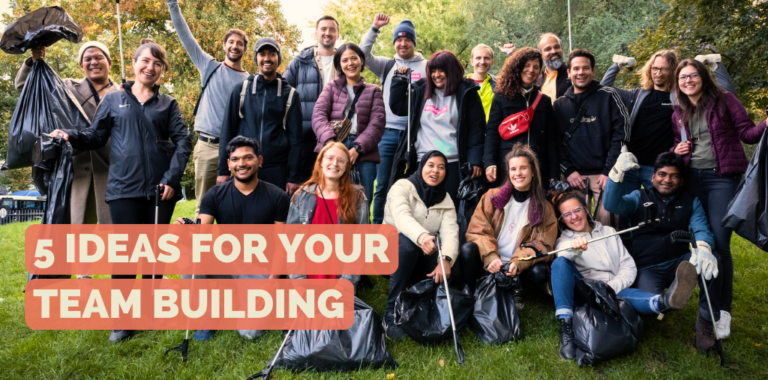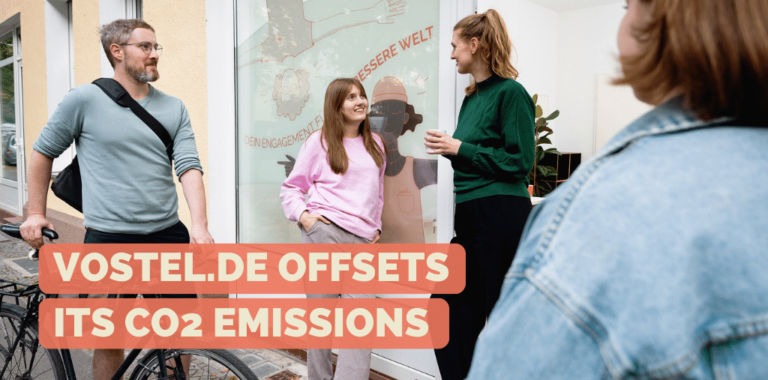5 mistakes concerning Corporate Volunteering
In October 2015, Süddeutsche Zeitung stated that „A growing number of organisations support the social commitment of their employees: it’s called ‚corporate volunteering.‘“ Part of daily business in the US already, corporate volunteering only just started emerging on an increasing number of senior level agendas outside the US: demonstrating corporate responsibility by allowing employees to dedicate a certain number of hours to non profit projects. This enables them to work in refugee camps, animal care homes or community gardens. Individual assignments, group activities (so-called „social days“) or skill based pro bono commitment – there are many possibilities for organisations to develop corporate social responsibility. The positive effects of corporate volunteering are well-known: non profit organisations receive support from corporate volunteers, employees collect new experiences and go back to work equipped with new motivation. As for the corporation, it benefits from the employee’s experiences — a win win situation for everyone involved?
Yes and no. Just because something was meant well doesn’t actually mean it was done well. Through our work with non profits, volunteers and corporations, we have come across some pitfalls and mistakes that influence the effectiveness of corporate volunteering — and a few possibilities to deal with them.
Mistake No 1: „The more employees who volunteer the better“
Requests for projects involving 50 employees or more is something that we receive frequently. However, it is often ignored that the number of people is not necessarily related to the effectiveness and actual help provided.
Many organisations are simply not able to provide the spatial or personal capacities to receive a big group of people. Big groups also imply big efforts in terms of coordination which makes it very difficult for the organisation itself to actually work on daily business. (Often this is where meaning well doesn’t have the desired impact but turns into the opposite of what was planned.)
Our tip: Create small groups and support a number of different projects. Generally, it has proven useful to select one person from the team who becomes responsible for the project making arrangements with the organisation in advance and managing the team on the day of the event. There is a handful of experienced and competent partners who can offer support like Proboneo for pro bono activities, Visioneers for refugee support and us from vostel for social days and the placement of individuals.
Mistake No 2: „Our employees have come to work, not for fun“
Unfortunately, some corporations only consider corporate volunteering as a means for image improvement not taking into consideration the actual needs of their employees. This often implies that team building activities and food or drinks are not thought of for the corporate volunteering project. The feedback provided by participants is then proof that this is not the place to save money: no employee will be happy to go to a „labor camp“ and a snack for in-between should not lead any company to the verge of bankruptcy. Hungry volunteers lacking enthusiasm do not bring added value to any organisation or social project.
Our tip: Always include some money for food and drinks in the budget. Keep in mind that additional manpower will be needed — either internal staff or external partners — to guarantee support and motivation on site on the day of the event.
Mistake No 3: „Why should we pay money for the social commitment of our employees?“
The annual budgets of corporations include money that can be allocated for trainings, language courses and team events in order to keep employees happy and to help them develop professionally. Corporate volunteering has a positive impact in many areas: competency and skill development, staff retention, employee motivation, corporate social responsibility etc. In order to actually take advantage of these positive impacts and to make everybody involved happy — non profits, employees and, last but not least, the employer — it is not only a matter of having the right instinct for people’s needs. Efforts in terms of organisation and coordination should not be underestimated in order to avoid that the social day happens at the expense of the social actor which means that them going about their daily business is impossible. Tasks that come up for a social day:
- Project development and planning
- Purchase of materials and food/drinks
- Preparation on site
- Briefing of participants
- Support of participants during the event and management of the working groups
- Preparation, distribution and analysis of feedback forms
(It is important to be aware of the preparation needed to organise effective volunteering projects. Those expecting that non profit partners can provide everything themselves risk that the help offered doesn’t balance the costs incurred.
Our tip: If social corporate projects shall be effective, this does not only imply time but also money. Competent partners offering professional support are listed above (Mistake No 1).
Mistake No 4: „There have only been a few sign ups for our corporate volunteering projects. It appears that internally the interest and motivation for those projects is limited.“
Many corporations limit their internal communication about volunteering activities to one internal mailing sent to all employees where they inform them about their corporate volunteering options during work hours. However, considering the 600 emails employees receive on a monthly basis, one email is not sufficient. Especially content on a relatively unknown topic like corporate volunteering. Good communication campaigns always raise awareness through different channels. Corporate volunteering is not everybody’s first priority which means they have to be reminded about their volunteering options.
Our tip: It saves money and time to inquire internally about the general interest and motivation concerning social projects before the start of a corporate volunteering programme. A well-planned and recurring (at least once every three months) communications campaign on various channels (e.g. mailings, information stands, posters, flyers, reminders on screensavers) guarantees consensus and high participation rates.
Mistake No 5: „We would like to volunteer next week. I am sure it will be easy to find a project“
Even if there are plenty of organisations in need of more support some time to organise and to prepare the volunteering project is necessary (at least four weeks). Especially, when many employees want to join as volunteers, all required tasks need to be prepared and necessary materials organised — and all that in addition to the day-to-day business.
Our tip: Plan in sufficient time for organisation and arrangements. Be flexible with regard to the day of the event (make at least two suggestions) and the times. Those organising everything only a week in advance need to expect a „no“. Think about regular corporate commitment that can be planned in advance instead of one big shot per year. Sending three different employees to a certain organisation once a week can lead to more impact than one annual event with 50 people.
If you want to learn more, we also recommend this practical guide by Phineo.
Since 2015 we at vostel.de have been working on making corporate volunteering as rewarding as possible. The focus of our work is always the greatest possible impact – on your employees and the non-profit organisation.
We would be happy to advise you on possible corporate volunteering activities and support you in developing a strategy for effective corporate volunteering.







No Comments yet!